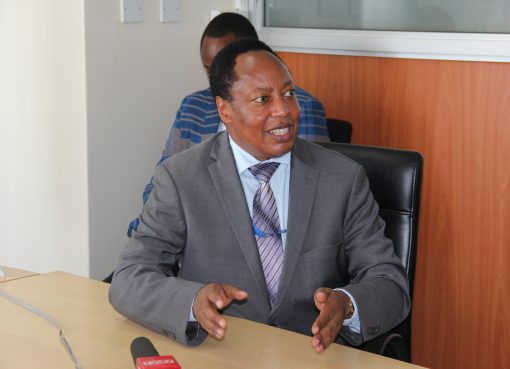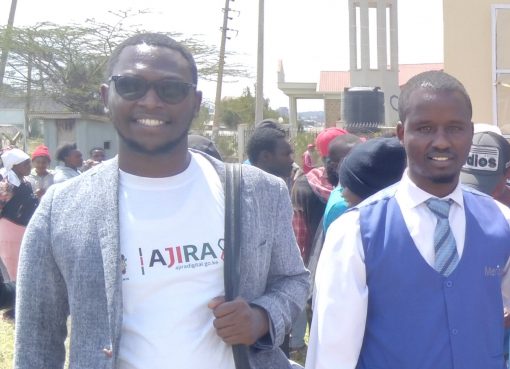As leaders in Machakos grapple with the puzzle of runaway suicide cases in the county, stakeholders in the children’s department are equally shocked at the high numbers of underage girls falling prey to marauding sex pests.
Indeed, if figures from the county’s health facilities are anything to go by, then there is every reason for area residents and leaders worry.
According to official statistics which were released towards the end of last year by the County Children’s department, the number of pregnancies for girls aged 10 and 14 years beginning from January to October stood at 2,040.
In addition, during the same period a total of 8,016 girls aged between 15 and 19 years were reported to have visited the various health facilities for pregnancy related treatments.
Overall, a total of 8,220 underage pregnancies were reported in the county, notwithstanding the fact that this number excludes girls who gave birth at home and were therefore not documented.
The County Children’s Officer, Salome Muthama decried the findings and warned that unless something urgent was done, the future of the girls in the county was bleak.
She said the situation had now reached ‘disturbing levels’ and portends a real threat for the overall growth of the country, including eradication of poverty and dealing with rising crime levels.
“We are talking about children giving birth to children here. With these kids engaging in casual sex, we are staring at more incidences of HIV/Aids infections, more children not finishing school with many of them possibly later taking to prostitution and criminal activities to make ends meet. It’s a disaster in the waiting,” she said during the recent County Area Advisory Committee held in Machakos Kyaka Hotel.
But even as the authorities get baffled at these findings and strive to arrest the situation and nab those behind these heinous crimes, conspiracy of silence remains a the biggest impediment to the war against sexual abuse among minors.
The society is unwilling to cooperate fully in exposing men who prey on underage girls for fear of ‘destabilizing the established social order.’
The challenge is especially rife where the suspect happens to be a family member of the victim, a situation which could be the reason why majority of defilement cases go unreported.
For instance, Senior Assistant Sub Chief of Eastleigh sub location in the region, Patrick Loki says he has not received any defilement case in his area for some times now.
But he is quick to add that this is not the true reflection of the reality on the ground. He explains that majority of the cases go unreported and the victims are therefore left to suffer in silence.
“Defilement cases are rarely reported to this office as many people fear revealing the identity of the culprit. The situation is even rife if both the culprit and the victim happen to be members of the same family. In such a scenario the members rarely report the incident due to stigma and shame that such a revelation would bring to the reputation and dignity of the concerned individual in the society,” stated Loki.
The assistant chief also blames kangaroo courts where cases are settled at the village level for aggravating the situation, by ensuring that defilement cases never reach the relevant authorities.
But such compromises only end up confining the abused minor to untold suffering both physically and psychologically and could affect the victim for many years to come if not for a lifetime.
When we visited the local children’s office, the Deputy County children’s officer Emily Kimanzi gave us a grim picture of the situation on the ground, noting that her office was receiving at least three cases of defilement weekly.
Shockingly, majority of these cases involved people well known to the minors, while at the same time cases of sexual escapades between two minors are also common.
However, Kimanzi says her office is doing all it could to make sure those found culpable face the full force of the law as a way of ensuring the abused minors get justice. Eventually, it acts as a deterrent of some sort to those contemplating to indulge in a similar act.
The rate of defilement in this sub county is on the rise. Hardly a week passes without receiving at least three cases of defiled children. Most cases brought to my office involve people well known to the children including their own relatives,” she says.
The Children Department is now partnering with local administrators to deal with the menace.
According to Kimanzi, chiefs and their assistants are the first line of help in not only identifying those responsible but making sure the culprits are apprehended to face the justice system.
Indeed, according to the officer, many of such cases have been concluded and the suspects handed severe sentences, whereas those whose cases are still in court are currently out on bail or in custody.
But despite the efforts to protect the welfare of the children from preying eyes by the government, the society needs to be part and parcel of this endeavor, according to Kimanzi.
The victim, regardless of whether he or she finally gets justice may bear the scars of the horrible experience for the rest of her life.
The chances of early pregnancies, contracting STIs, HIV /Aids are also an ever present reality.
Consequently, such children require tender care, concern and understanding from all and sundry to help them extricate themselves from the shackles of their shameful past.
“Unwanted pregnancies, HIV/Aids and other sexually transmitted diseases, social stigma and interruption of schooling are the risks associated with defilement. These are harsh realities that must be dealt with even as we confront this social challenge,” added Kimanzi.
On his part, Reverend Leah Ambwaya, the founder of Terry Children Homes insists that the only way to deal with sexual abuse against children is to make sure culprits are brought to book to answer for their errant behavior.
She points out that as a long as the society buries its head in the sand and shields pedophiles from justice, the war against sexual abuse against underage children will remain a pipe dream.
According to a 2017 United Nations Population Fund (UNFPA) report on teenage pregnancies in Kenya, nearly one in five girls aged 15-19 had already had a baby or was pregnant by 2014.
UNFPA estimates that at least 20,000 girls under 18 years give birth every day in Africa.
By Samuel Maina/Stephen Kimanthi/Angela Moriet



